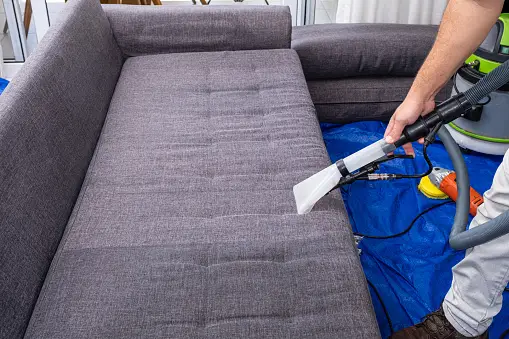The Ultimate Guide to Sofa Deep Cleaning: Revive Your Living Room Comfort
A sofa is more than just a piece of furniture—it's the heart of your living space. It’s where families gather after a long day, friends chat over coffee, and countless memories are made. But beneath those cushions and fabric lies an accumulation of dust, allergens, body oils, crumbs, and even invisible bacteria. This is where sofa deep cleaning becomes essential—not only for aesthetics but also for hygiene and health.
Why Sofa Deep Cleaning Matters
Over time, your sofa absorbs everything from pet dander to food stains. Even if it looks clean on the surface, it can harbor grime and bacteria deep within its fibers. Regular vacuuming or spot cleaning may offer temporary relief, but it's not enough to truly clean your sofa. Deep cleaning goes far beyond the surface, removing hidden dirt and rejuvenating your upholstery inside and out.
Ignoring the need for sofa deep cleaning can lead to poor indoor air quality, persistent odors, and even skin allergies. The cleanliness of your sofa directly influences the health of your home environment.
Signs That Your Sofa Needs Deep Cleaning
There are clear indicators that your sofa is overdue for a thorough clean. If it emits a musty smell, has visible stains, or feels sticky to the touch, it's time to consider a deep cleaning session. Additionally, if you or your family members start sneezing or experiencing allergic reactions more frequently in the living room, it might be due to accumulated allergens in the upholstery.
Don’t wait until the grime becomes obvious. Regular maintenance, including periodic sofa deep cleaning, ensures that your furniture remains inviting and safe for everyone.
The Process of Sofa Deep Cleaning
Deep cleaning a sofa involves several steps, each designed to eliminate various forms of dirt and bacteria. The process usually begins with a high-powered vacuuming to extract loose debris, pet hair, and dust mites from the surface and crevices.
Next comes stain treatment. Professional
cleaners use specialized solutions based on the type of fabric and the nature of the stains—whether they’re from wine, coffee, ink, or pet accidents. These treatments break down the stains without damaging the fabric.
Steam cleaning or hot water extraction follows, targeting the deeper layers of your sofa. This method uses high-temperature steam to kill bacteria and lift stubborn dirt from the upholstery. For leather sofas, conditioning treatments are applied to prevent cracking and maintain softness.
After cleaning, the sofa is usually left to air dry, which may take a few hours. Some professionals use drying machines to speed up the process, minimizing downtime.
Benefits of Professional Sofa Deep Cleaning
While DIY methods can offer short-term results, hiring a professional for sofa deep cleaning guarantees a much more thorough outcome. Experts have access to industrial-grade equipment and fabric-safe cleaning solutions that aren't available to the average consumer. They can tailor the cleaning process to your specific type of upholstery—be it cotton, suede, velvet, or leather—ensuring optimal care and longevity.
Moreover, professional cleaning helps in extending the lifespan of your sofa. By removing the abrasive dirt and oils that wear down fabric fibers, you protect your investment and save money in the long run.
How Often Should You Deep Clean Your Sofa?
The frequency of deep cleaning depends on several factors, including usage, presence of pets, and whether you have children or people with allergies in your household. As a general rule, sofa deep cleaning should be done at least once every 6 to 12 months. However, in high-traffic homes or during allergy season, you might consider cleaning your sofa more frequently.
Regular deep cleaning not only enhances the appearance of your living room but also supports a healthier lifestyle.
DIY Sofa Deep Cleaning Tips
If you're up for the task, you can perform a light version of deep cleaning at home. Start with thorough vacuuming, including under cushions and along seams. Use a gentle fabric cleaner or a mixture of mild detergent and warm water to spot-clean visible stains. Be cautious with moisture—too much water can lead to mold growth within the cushions.
Test any cleaning solution on a hidden part of the sofa to ensure it doesn't damage the fabric. After cleaning, allow the sofa to dry completely before using it again.
However, keep in mind that while DIY methods can help maintain your sofa between professional cleanings, they’re not a complete substitute for expert care.
Final Thoughts on Sofa Deep Cleaning
Your sofa is a central element of your home—a place of comfort, conversation, and relaxation. Keeping it clean is not just about looks; it’s about preserving health, comfort, and the longevity of your furniture. Sofa deep cleaning is a crucial part of maintaining a clean and cozy home.
Whether you choose to do it yourself or hire a professional, regular sofa deep cleaning will reward you with a fresher, more inviting living space. So the next time you sink into your sofa, do it with peace of mind, knowing it's as clean as it is comfortable.
